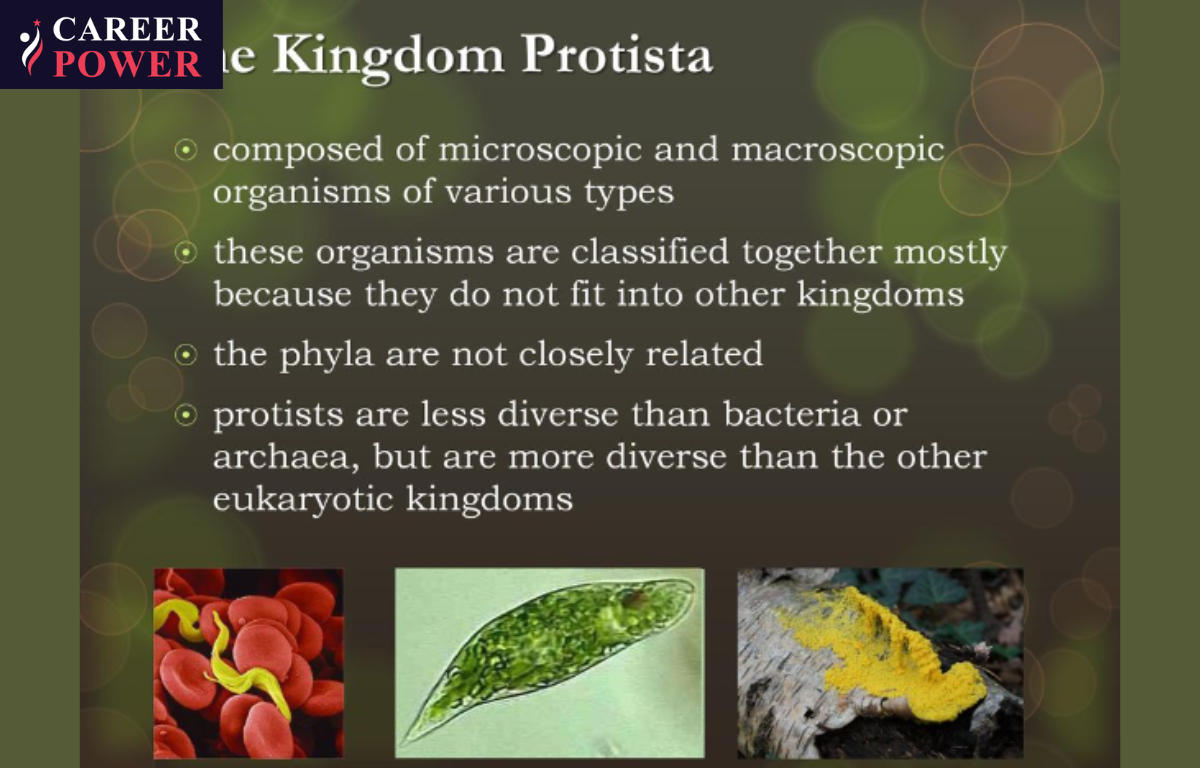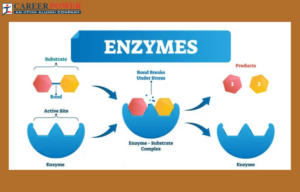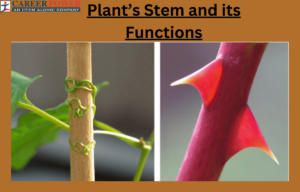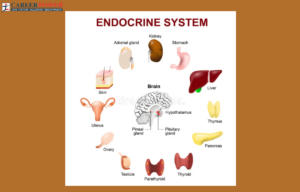Table of Contents
The five-kingdom classification was proposed by R.H. Whittaker in 1969. The five-kingdom classification system categorizes organisms into five main groups: Kingdom Monera, Kingdom Protista, Kingdom Fungi, Kingdom Plantae, and Kingdom Animalia; is important because it provides a framework for organizing and understanding the diversity of life on Earth.
It helps scientists study and communicate about different species, their relationships, and their evolutionary history. This classification system also aids in identifying new species, understanding ecosystems, and guiding research in fields such as genetics, ecology, and conservation.
Kingdom Protista
The term Protista comes from the Greek word “Protistes” which means “the very first” or “the first of its kind”. This reflects the idea that Protists are some of the earliest forms of eukaryotic life on Earth. The kingdom Protista is a biological classification that includes a diverse group of eukaryotic microorganisms.
It’s often considered a “catch-all” kingdom for organisms that don’t fit neatly into other kingdoms like plants, animals, or fungi. Protista can be unicellular or multicellular, and they exhibit a wide range of characteristics and life cycles. Some well-known examples include amoebas, algae, and paramecia.
Characteristics of Kingdom Protista
The characteristics of organisms in the kingdom Protista can vary widely due to the diversity of the groups. It’s important to note that the characteristics of protists can be quite diverse due to the vast range of organisms that fall under this classification. However, here are some general characteristics often associated with protists:
- Eukaryotic Cells: Protists are composed of eukaryotic cells, which means they have a distinct nucleus and other membrane-bound cell organelles within the cells.
- Unicellular or Simple Multicellular: Protists can exist as single-celled organisms or as simple multicellular structures. Some may form colonies of cells that work together in a coordinated manner.
- Cellular Organization: While some protists have specialized cell types, many exhibit a relatively simple cellular organization compared to higher organisms.
- Diversity: Protists are incredibly diverse in terms of form, function, and lifestyle. They include various groups such as protozoa (animal-like protists), algae (plant-like protists), and slime molds.
- Lack of Tissue Differentiation: Unlike more complex multicellular organisms, protists often lack true tissue differentiation and specialized organ systems.
- Nutrition: Protists exhibit a range of nutritional modes. Some are autotrophic, producing their own food through photosynthesis (algae), while others are heterotrophic, consuming organic matter or other organisms (protozoa).
- Mobility: Many protists are capable of movement. Some use flagella, cilia, or pseudopodia (temporary projections of the cells) for locomotion.
- Importance: Protists play significant ecological roles as primary producers, decomposers, and consumers in various economic importance in industries like food production and biofuel research.
Examples of Kingdom Protista
Here we have mentioned a few examples of organisms from the kingdom Protista. These examples showcase the diversity of protists, ranging from simple unicellular organisms to more complex multicellular forms, each with unique characteristics and roles in various ecosystems.
- Amoeba: Amoebas are unicellular protists that move using pseudopodia, temporary extensions of their cell membrane. They engulf food particles by surrounding them with their pseudopodia. The process of nutrition in amoeba takes place through Holozoic Nutrition.
- Paramecium: They are ciliated protists that live in freshwater environments. They have hair-like structures called cilia that they use for movement and to create water currents that bring food into their oral groove. They generally follow holozoic nutrition.
- Euglena: Euglenas are flagellated protists that possess chloroplasts and are capable of photosynthesis. They have a whip-like structure called a flagellum that helps them move.
- Diatoms: Diatoms are unicellular algae with intricate silica shells. They are important phytoplankton in aquatic ecosystems and are known for their unique and intricate patterns.
- Plasmodium: Parasitic protists responsible for causing malaria in humans.
- Dinoflagellates: Unicellular organisms known for their flagella and ability to produce bioluminescence.
- Trypanosoma: Parasitic protists causing diseases like African sleeping sickness and Chagas disease.
- Slime Molds: Unicellular or multicellular organisms that can form complex structures for reproduction and feeding.
Kingdom Protista Classification
The kingdom Protista is a diverse group of eukaryotic microorganisms that don’t fit neatly into other kingdoms. It’s important to note that the classification of Protista has evolved over time and continues to be refined. Please note that the classification of Protista is complex and has undergone revisions. New research and discoveries might lead to changes in how protists are categorized.
- Kingdom: Protista
The kingdom Protista is further subdivided into several major groups or phyla, which include:
| Kingdom Protista Classification | |
| Classification | Description |
| Protozoa | Unicellular, animal-like protists, which include many different phyla: Sarcomastigophora, Ciliophora, and Apicomplexa. |
| Algae | Plant-like protists that are capable of photosynthesis, include Chlorophyta, Phaeophyta, Rhodophyta, Bacillariophyta, and Dinophyta. |
| Slime Molds | Fungus-like protists, which include Myxomycota, and Dictyosteliida. |
Phyla of Kingdom Protista
The kingdom Protista is divided into various phyla, each containing different groups of organisms.
| Phyla of Kingdom Protista | ||
| Phylum | Characteristics | Examples |
| Sarcomastigophora | Use pseudopods or flagella for movement. | Amoebas, Flagellates |
| Ciliophora | Movement and feeding facilitated by cilia. | Ciliates |
| Apicomplexa | Parasitic with complex cycles. | Plasmodium, Toxoplasma |
| Chlorophyta | capable of performing the process of photosynthesis. | Green Algae |
| Phaeophyta | Often found in marine environments. | Brown Algae |
| Rhodophyta | Typically found in marine habitats. | Red Algae |
| Bacillariophyta | Intricate silica cell walls; common in aquatic environments. | Diatoms |
| Dinophyta | Flagella, some species cause harmful algal blooms. | Dinoflagellates |
| Myxomycota | Multinucleate plasmodium stage in the life cycle. | Plasmodial Slime Molds |
| Dictyosteliida | Cellular aggregation during reproductive stages. | Cellular Slime Molds |
Characteristic Features of All the Phyla of Kingdom Protista
Here we have described some of the main characteristics of all the phyla of kingdom Protista.
1. Phylum Sarcomastigophora
- The phylum Sarcomastigophora includes amoebas and flagellates.
- Members of this phylum move using pseudopods (amoebas) or flagella (flagellates).
2. Phylum Apicomplexa
- The organisms of the phylum Apicomplexa are parasitic protists.
- They often have complex life cycles involving both sexual and asexual reproduction.
- They include plasmodium, which is responsible for causing malaria.
3. Phylum Ciliophora
- The phylum Ciliophora includes ciliates, which have hair-like structures called cilia used for movement and feeding.
4. Phylum Cholorophyta
- The phylum Chlorophyta includes green algae.
- These algae are capable of performing the process of photosynthesis.
5. Phylum Phaeophyta
- The phylum Phoeophyta includes brown algae, commonly found in marine environments.
- Some species are quite large, such as kelp.
6. Phylum Rhodophyta
- The phylum Rhodophyta includes red algae.
- They are typically found in marine habitats.
7. Phylum Bacillariophyta
- The phylum Bacillariophyta includes diatoms, which have intricate silica cell walls.
- They are often found in aquatic environments.
8. Phylum Dinophyta
- The phylum Dinophyta includes Dinoflagellates, known for their flagella and role in marine ecosystems.
- Some species can cause harmful algal blooms.
9. Phylum Myxomycota
- The Phylum Myxomycota includes plasmodial slime molds.
- They have a unique life cycle involving a multinucleate plasmodium stage.
10. Phylum Dictyosteliida
- The phylum Dictyosteliida includes cellular slime molds.
- They form cellular aggregation during reproductive stages.

 Enzymes: Definition, Functions, and thei...
Enzymes: Definition, Functions, and thei...
 Plants Stems - Structure, Function of a ...
Plants Stems - Structure, Function of a ...
 Human Endocrine System, List of Endocrin...
Human Endocrine System, List of Endocrin...
